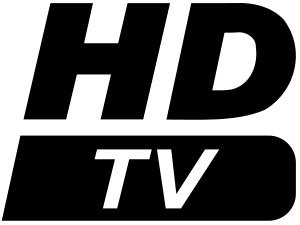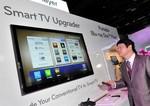
Deutsch: HD-TV-Logo (Photo credit: Wikipedia)
The ways in which we are accessing content, and how will will access it in the future, are rapidly transitioning. There is so much choice available to consumers right now, that it can be extremely confusing to sort through it. But this is the best time to educate yourself, while things are in a state of flux and the clear choices will emerge in the next few years. A good rule of thumb right now is to not invest in a big ticket item if you don’t want to get stuck with a depreciating asset (unless you have money to spare, that is). Remember the Beta and VHS wars of the past?
Streaming and IPTV are not interchangeable terms. However, there may be devices, such as high definition TV sets that are internet-connected, that can engage in both streaming as well as IPTV technology. It’s also important to note that IPTV is not available everywhere. In fact, availability is fairly limited in the United States. However, streaming is literally available to anyone with a broadband connection 3 Mbps and above.
Identifying Where the Confusion Lies
Many of us believe that Internet Protocol Television (IPTV) is simply a way to stream high definition versions of content online. While certainly you can set up to stream on an internet-connected television set, IPTV technology is not simply an overpriced, high definition streaming media player. Internet protocol technology powers many devices – your computer, your mobile device, and now, your television set.
What Exactly is IPTV Service?
IPTV service has to be subscribed to from an internet provider, and you must live within an area where they have expanded their fiber optic networks, in some cases, all the way to your doorstep. The fiber optics are instrumental in delivering the top quality experience of IPTV. Examples include Verizon FiOS and AT&T Uverse in the United States.
You can expect three kinds of content delivered via IPTV – live television options, video on demand, and time-shifted programming, which allows you to access content that has already begun and rewind it to the beginning. Standard DVR technology will not allow that unless you already had the channel up and running when the program started. It is the time-shifted programming that sets IPTV apart from a standard cable or satellite TV subscription. The pricing is similar to a cable TV subscription, albeit a bit more expensive. Satellite TV is still the lowest priced option.
What Exactly is Streaming?
When people throw around the term streaming, they usually are referring to accessing content from the internet and viewing it on their computer, mobile device, or TV set that has a streaming media player attached or built-in. Popular streaming services include Netflix, Hulu Plus, Amazon Instant Video and VUDU. IPTV and streaming can co-exist in one home. Streaming is very inexpensive, and streaming libraries are much larger than the on demand content that IPTV provides.
Where Does Smart TV Technology Fit In?

LAS VEGAS, NV - JANUARY 06: Sungsoo Kwak controls the LG ST-600 smart TV upgrader set-top box with a smart phone at the 2011 International Consumer Electronics Show at the Las Vegas Hilton January 6, 2011 in Las Vegas, Nevada. CES, the world's largest annual consumer technology tradeshow, runs through January 9 and is expected to feature 2,700 exhibitors showing off their latest products and services to about 126,000 attendees. The black box will upgrade a conventional televison to a smart TV and is planned to be released in May 2011. (Image credit: Getty Images via @daylife)
Simplistically, Smart TV enables you to have access to social media, chat with other viewers, targeted advertising based upon your viewing habits, and much more while watching television. This technology is still in its infancy, but you can dabble in it both through IPTV (such as with Verizon FiOS and the ability to surf the internet through your TV set and access social media) and streaming technologies like Google TV that allow you to access apps for social media. However, true Smart TV that you can purchase off the shelf will continue to be a work in progress that is largely dependent on demand. Our thought is that it will not take off until we have a serious economic upturn.
What can you do in the interim? Keep the TV set that you have, and utilize a streaming media player to access content online unless you already have an internet-enabled television set. If you want to dabble in more smart TV technology, you can opt for a device that uses Google TV technology, which is considered quite powerful and effective, even though it’s still a bit buggy.
Source: http://www.eyepartner.com/iptv-solutions/what-is-iptv-3/


